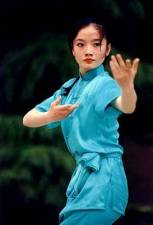There are about one hundred uncontacted tribes left in our world, i.e. groups of people who have never experienced any kind of connection with our modern civilization. From these, more than a half live in Brazil or Peru. They are in danger to be driven off their land by deforestation and soil resource exploitation. A web site to help the tribal people survive was set by Survival International.
Besides the direct threat of being attacked (especially the loggers often shot them) and evicted by force from their ancestral land, the tribal people are also very vulnerable to the diseases brought by the modern humans. For example in 2003, over 65 percent of Columbia's Nukaak Maku tribe died of disease after contact was made by explorers.
'We did the overflight to show their houses, to show they are there, to show they exist,' said Brazilian uncontacted tribes expert José Carlos dos Reis Meirelles Junior. 'This is very important because there are some who doubt their existence.'
When anthropologists first overflew the area, they saw women and children in the open and no one appeared to be painted.
It was only when the plane returned a few hours later that they saw these individuals covered head-to-toe in red. 'Tribes in the Amazon paint themselves for all kinds of different reasons - one of which includes when they feel threatened or are aggressive,' Ms Ross says.
Apparently the tribe had the heads partly shaved and also had some plant gardens around their settlement. What they eat, what kind of language they speak, what are their beliefs and customs, nobody knows, and, in order to protect them, maybe it's better for the things to stay this way.
More information about this topic can be found here and here. The source of the photos was Survival International. Please click on the photos in order to enlarge them.
The website of the National Geographic also shows an older photo of an uncontacted tribe taken from an airplane in October 2007. A group of natives near palm huts on the banks of the Las Piedras River in Peru's southeastern Amazon can be seen. The natives are said to be among the 15 uncontacted tribes thought to be living in the Peruvian rain forest.
In this contact between "civilized" and "primitive" people, I really wonder where the real civilization is. Sometimes I think that we, modern people, are the primitives.
















